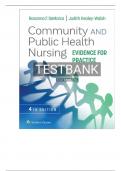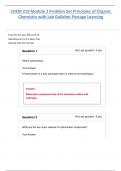College aantekeningen
Digital Innovation and Entrepreneurship (exam grade: 9'5/10), all lectures + comments of the teacher + some extra additions of readings ()
- Instelling
- Universiteit Van Amsterdam (UvA)
73 pages which contain all the notes for "Digital Innovation and Entrepreneurship (6013B0524Y)". + explanation of the teacher + some anotations of some readings outside the lecture slides. Got a 57/60 in the final exam with these notes.
[Meer zien]














